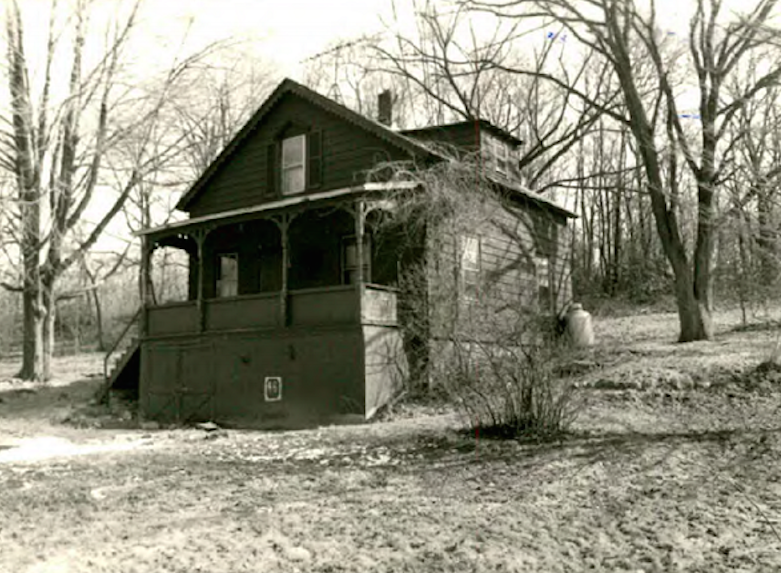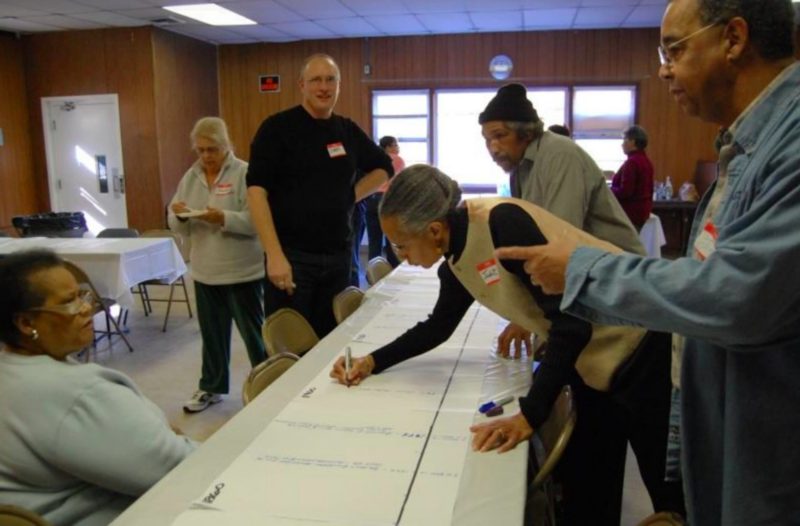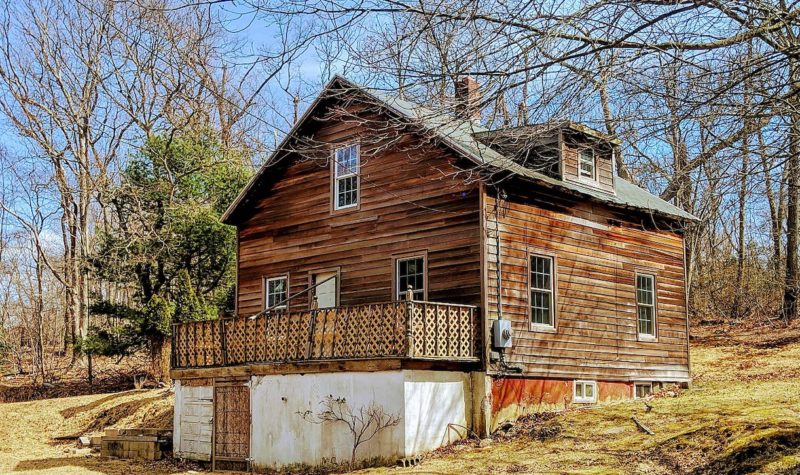Repairing National Register nominations: underrepresented communities and integrity
21 July 2020 – Sarah Kautz, Rachel Leibowitz and Joanna Doherty
historic preservation, inclusion, working group, 2019 annual meeting, National Register of Historic Places
Authors’ Note: This is the second of three posts resulting from discussions of our 2019 NCPH annual meeting working group on improving existing National Register nominations. (The first post focused on technical matters.) In this series, we’ll highlight best practices we developed—using our working group member case statements as a starting point—to encourage frequent revisions of National Register nominations. We consider these thoughts a starting point in figuring out how to think of National Register nominations as living documents that must change periodically to reflect the history of a given community and serve its evolving needs. Join the conversation in the comments!
After years of important discussions and calls for change, many of us are ready to make the National Register more inclusive and equitable. But how? One potential solution involves updating existing National Register nominations, an approach discussed during the Repairing National Register Nominations Working Group at the 2019 NCPH Conference.
The National Register provides a high level of recognition to historic resources, and communities associated with those resources are rightfully proud. Nevertheless, National Register nominations do not represent the exhaustive history of a place, nor do they address changes that may have occurred since the nomination was first prepared. “No one would expect a history textbook from the 1960s to reflect the current narrative of American history without significant revision,” notes John H. Sprinkle, Jr., “but the fact is that only 3 percent of the ninety thousand listings on the National Register have even been updated for content.” [1] So what happens when an existing nomination overlooks significant relationships to historically marginalized or underrepresented communities? When the historical complexity of a place is not fully represented in public documents like National Register nominations, the characteristics associated with its unrecognized history may be put at risk or even lost.

Eato House, circa 1980s. This photo was taken by Preservation Long Island (then known as SPLIA) during a Historic Resources Survey of the area sponsored by the Town of Brookhaven. Photo credit: Preservation Long Island
Fortunately, nominations are not set in stone. Amendments and new nominations can address previously undocumented histories and their associated elements. This post offers some practical guidance focusing on two pillars of National Register listing—significance and integrity—as they relate to acknowledging the connections between places and members of underrepresented or marginalized communities. We explore how alternative approaches to research, documentation, and outreach may expand the inclusivity of new and old nominations by telling significant but rarely heard stories. We also suggest some strategies for acknowledging multiple historical perspectives about the significance and integrity of a place such as amending an existing nomination.
Significance
According to National Register Bulletin #15: How to Apply the National RegisterCriteria for Evaluation: “The quality of significance in American history, architecture, archeology, engineering, and culture is present in districts, sites, buildings, structures, and objects that possess integrity of location, design, setting, materials, workmanship, feeling, and association, and:
A. That are associated with events that have made a significant contribution to the broad patterns of our history; or
B. That are associated with the lives of persons significant in our past; or
C. That embody the distinctive characteristics of a type, period, or method of construction, or that represent the work of a master, or that possess high artistic values, or that represent a significant and distinguishable entity whose components may lack individual distinction; or
D. That have yielded or may be likely to yield, information important in prehistory or history.
American history, architecture, archeology, engineering, and culture is present in districts, sites, buildings, structures, and objects.”
All nominations must evaluate significance with reference to at least one of the four criteria listed above (A, B, C, and D). Because architectural significance is easy to identify with limited fieldwork and direct documentary evidence like building plans, many existing nominations only address Criterion C. Yet nearly all architecturally significant buildings are also socially and culturally significant places. How do we move past a tendency to overemphasize architectural history to recognize that places are just as worthy of celebration and preservation for their social and cultural significance?
One strategy for better recognizing social and cultural associations to historic places is amending existing nominations that are based only on Criterion C to include significance defined by Criterion A. Criterion A is also a powerful tool for expanding periods of significance to reflect changes over time, especially in places with strong ties to historically marginalized people who are more likely to be disproportionately impacted by displacement. When using Criterion A, we recommend narratives consider how past and present residents may relate to the same place differently.

View of the collaborative community-based research conducted for the Bethel-Christian Avenue-Laurel Hill Historic District in Setauket, NY. Photo credit: Higher Ground Inter-Cultural & Heritage Associates, Inc.
Since the perspectives of historically marginalized people may not be represented in archives or other customary sources, we also recommend pursuing alternative approaches to research. Oral history sessions, folklore and ethnography, or informational websites with social media components tend to be more fruitful methods for gathering details about social and cultural perspectives relevant to Criterion A. Such collaborative research often yields substantial insight into the complex social history of a place and its significance to diverse groups and individuals. In places like Madison, Wisconsin, where architecturally significant buildings tend to be overrepresented in National Register listings, new creative strategies like storytelling plaques are helping to make preservation and public history more equitable for all.
Integrity
In addition to significance, resources are evaluated for the National Register with reference to seven aspects of integrity: location, setting, design, materials, workmanship, feeling, and association. A comprehensive evaluation of integrity helps contextualize how and why places change in relation to specific social, political, and economic circumstances. All aspects need not be present, and some aspects may be more important than others in conveying a resource’s significance. It is also important to bear in mind that the terms “integrity” and “condition” do not mean the same thing. Whether a site is in “good” condition or not is of little consequence for a nomination. It does not matter if a resource is “attractive” or meets any standard of taste; its ability to convey its significance—to reveal its connection to history—determines primary importance. Even the most modest or neglected building may still convey its significance in relation to historical events or themes, and damaged properties in poor condition may retain enough integrity to tell their stories.
Evaluating physical integrity is a major part of any nomination. Too often, however, when considering a place with ties to an underrepresented community, compromised elements of design, materials, and workmanship are cited as evidence that it lacks sufficient integrity for National Register designation. Yet design, materials, and workmanship may not be the most important aspects of integrity for resources associated with historically marginalized communities. Stories related to location, setting, feeling, and association are usually more relevant.

Exterior view of the Reverend Eato House a contributing structure in the Bethel-Christian Avenue-Laurel Hill Historical District in Setauket, NY. Photo credit: Higher Ground Inter-Cultural & Heritage Associates, Inc.
Take, for example, a structure like the Eato House in Setauket, New York, or the Brown Beret Headquarters in Los Angeles, California. Both represent commonly found modest building types in historically underserved communities. The Eato House is in the Bethel-Christian Avenue-Laurel Hill Historic District, which is a community with Native American and African American heritage. The Brown Beret Building in LA is primarily a Chicano historic site. Although some original building materials, including siding, window sash, and trim have been replaced over time, their original forms survive and they are located at original sites with relatively unchanged settings. Most importantly, members of the local or descendant community still associate these structures with their historic uses and storied pasts. To those who know and remember them, these places are easily identified, understood, and deeply valued. Such considerations convey integrity of feeling and association, or in other words, why and how people connect with a place via its physical location, setting, design, materials, or workmanship. Demonstrating that a place retains integrity of feeling and association adds depth and nuance to a National Register nomination, but it requires a collaborative approach to documentation, such as oral history interviews with community members.
For more information about how to achieve more inclusiveness and equity in historic preservation, see “Historic Preservation,” an essay featured in The Inclusive Historian’s Handbook, a new resource co-sponsored by the American Association for State and Local History (AASLH) and the National Council on Public History (NCPH).
~Sarah Kautz is the preservation director of Preservation Long Island.
~Joanna Doherty is the principal architectural historian at the Rhode Island Historical Preservation & Heritage Commission.
~Rachel Leibowitz, Ph.D., is an assistant professor and co-director of the Center for Cultural Landscape Preservation at SUNY College of Environmental Science and Forestry.
[1] John H. Sprinkle, Jr., “To Expand and Maintain a National Register of Historic Places,” in Bending the Future: 50 Ideas for the Next 50 Years of Historic Preservation in the United States, eds. Max Page and Marla R. Miller (Amherst and Boston: University of Massachusetts Press, 2016): 232.



